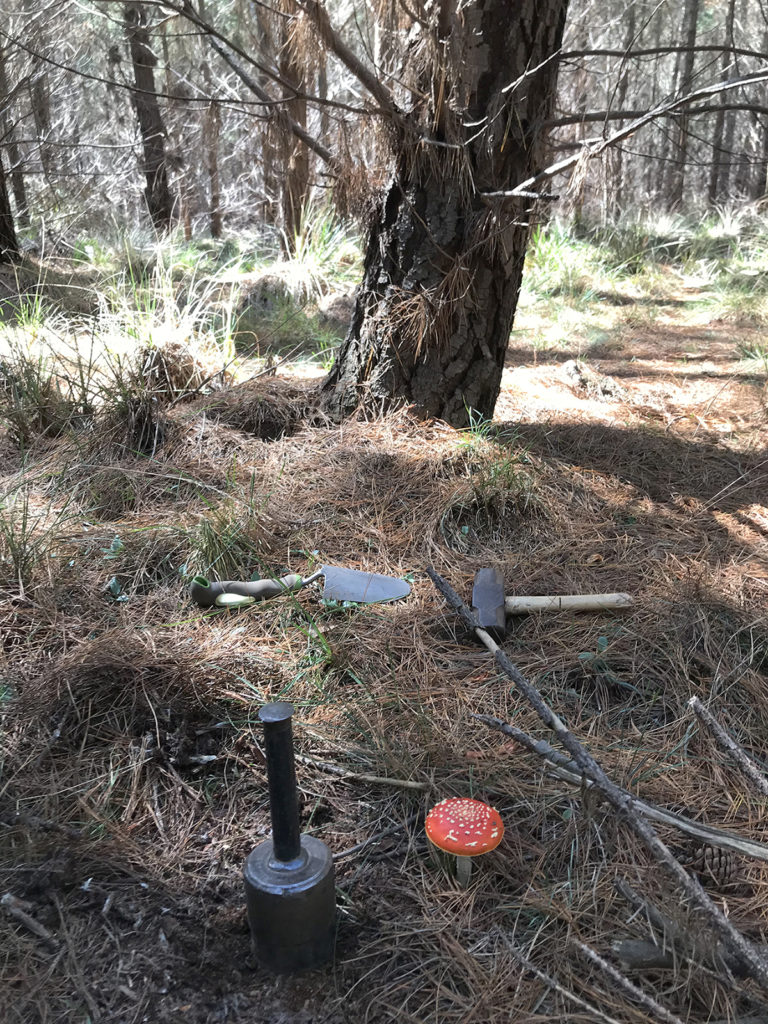
At a field site in Australia, an Amanita muscaria fruiting beside the team’s soil core. (Sunny Liao)
Pine plantations in the Southern Hemisphere possess greatly impoverished assemblages of ectomycorrhizal fungi (EMF), often fewer than 20 species at a single forest site, compared to native populations of those same pines. The filtering results in a loss of some EMF lineages and may lead to large-scale impacts on soil biogeochemical processes. This work is to understand how co-introduction and subsequent co-invasion of pines and EMF into the Southern Hemisphere have shaped the composition of soil fungal communities, driven the evolution of fungal genomes and genes required for EMF-plant communication, and altered soil cycling in ecosystems.
Proposer: Hui-Ling Liao, NFREC/University of Florida
Proposal: Genetic, community, and ecosystem consequences of co-introduction of mycorrhizal fungi with exotic pines